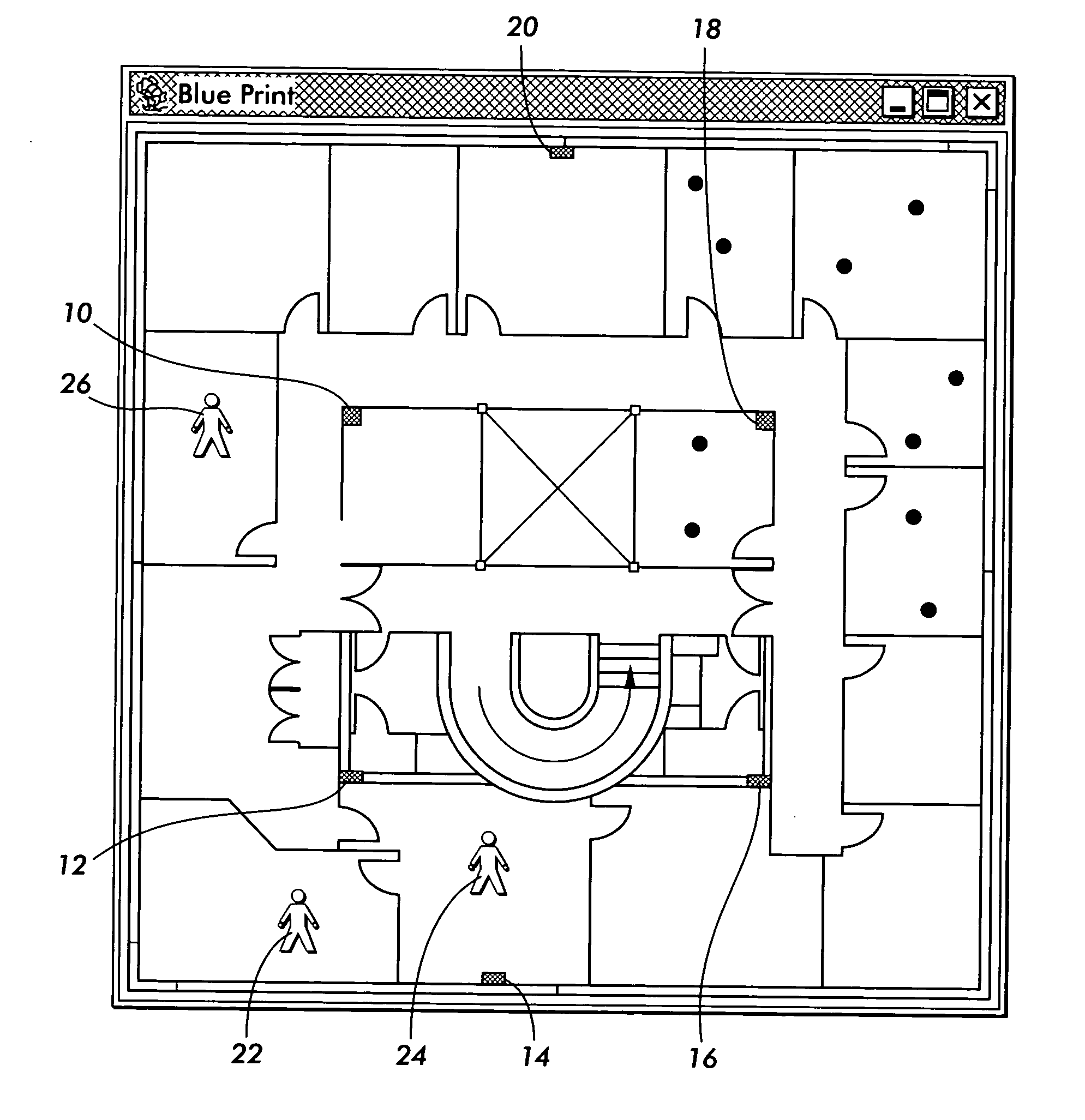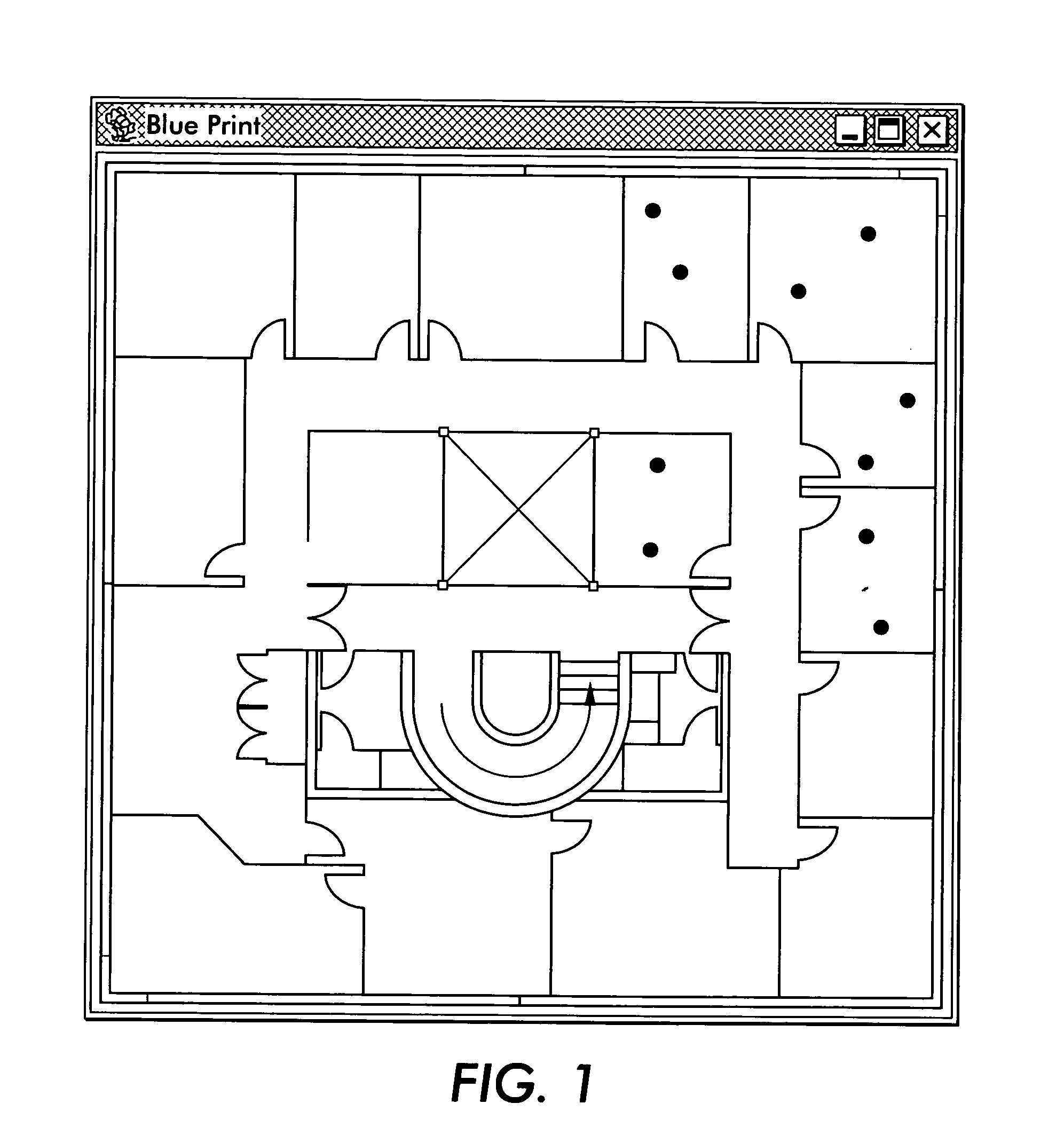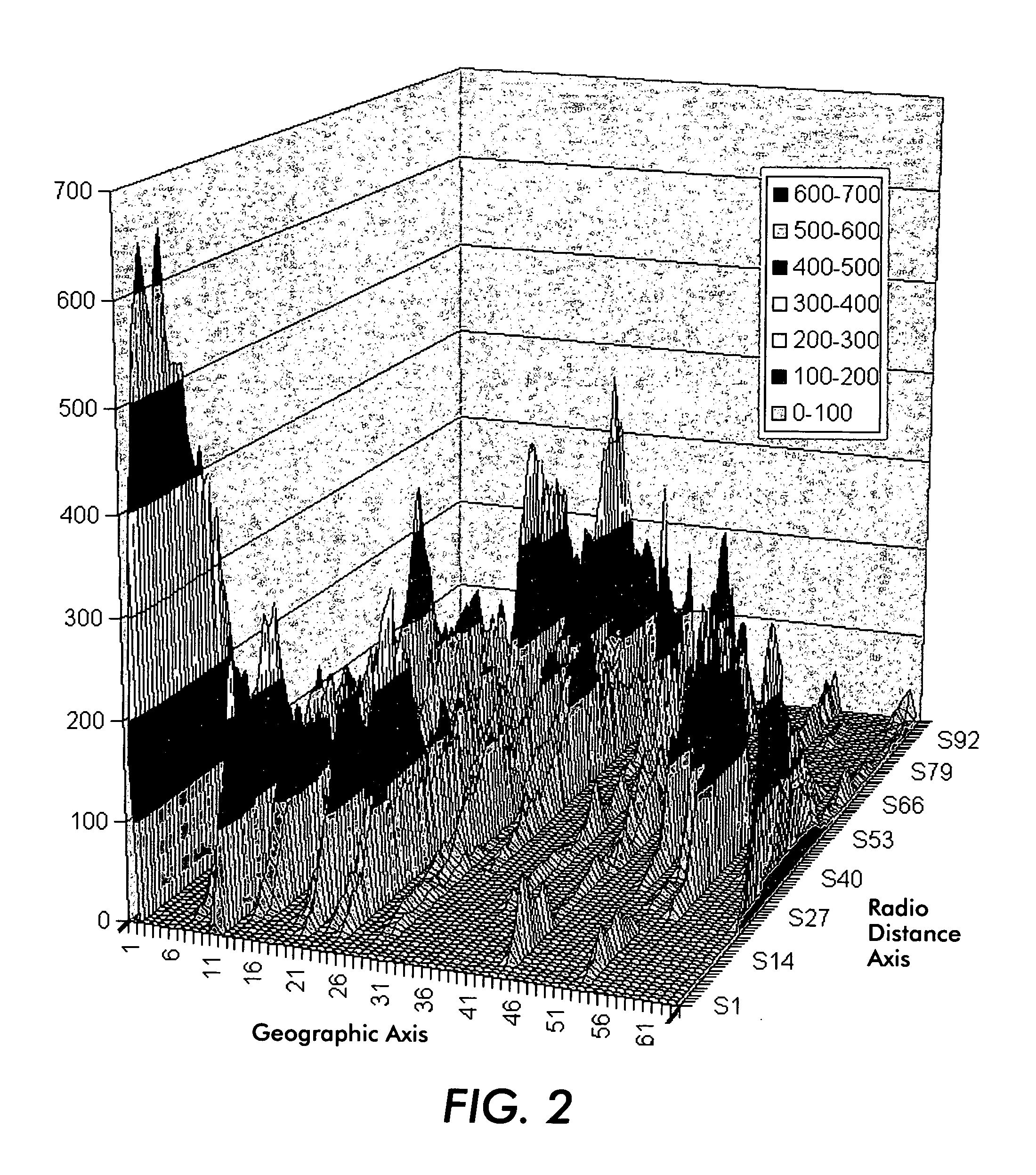Method for determining proximity of devices in a wireless network
- Summary
- Abstract
- Description
- Claims
- Application Information
AI Technical Summary
Benefits of technology
Problems solved by technology
Method used
Image
Examples
Embodiment Construction
[0016] In accordance with a method for determining device proximity in a wireless network, each device monitors the wireless network signal strength, noise level and the MAC address of the emitting base stations (and any other transmitting devices). Each device also acts as a peer in a network of peers exchanging the radio characteristics they observe. In this way, they can discover if they are in proximity of each other. The device may characterize the network by computing the average signal strength (SS) and noise level (NL) for each channel over a running window of time. Radio characteristics may be stored as a set of records, one per channel, each record indicating the channel MAC address and the observed SS and NL. The radio characteristics may be stored in a time-stamped journal, located in the device's memory. The device may collaborate with other devices on the local area network by exchanging with them the radio characteristics they respectively observe, in order to determi...
PUM
 Login to View More
Login to View More Abstract
Description
Claims
Application Information
 Login to View More
Login to View More - R&D
- Intellectual Property
- Life Sciences
- Materials
- Tech Scout
- Unparalleled Data Quality
- Higher Quality Content
- 60% Fewer Hallucinations
Browse by: Latest US Patents, China's latest patents, Technical Efficacy Thesaurus, Application Domain, Technology Topic, Popular Technical Reports.
© 2025 PatSnap. All rights reserved.Legal|Privacy policy|Modern Slavery Act Transparency Statement|Sitemap|About US| Contact US: help@patsnap.com



